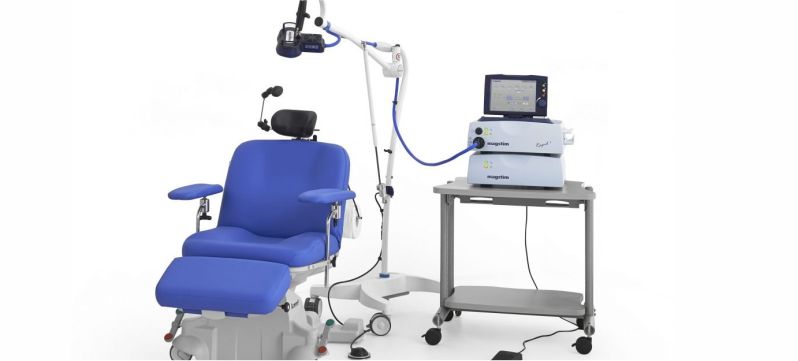rTMS AND DEPRESSION
Depression is also called major depressive disorder, and it is a common mood disorder that subjects a person to lose interest in the pleasurable things of life, it is often characterized by a feeling of worthlessness and immense sadness.
This condition distorts the way people think, behave or feel and causes behavioural, physical and psychological changes in them. It’s been said that over 265 million people suffer from this condition.
The danger with depression is that it can lead to a lack of productivity in a person’s life and, in uncontrolled circumstances, can lead to suicide.
According to the World Health Organization, depression kills about 800,000 persons yearly and is also one of the leading cause of disability worldwide and is a major contributor to the overall global burden of disease.
Who can get depressed?
Depression can occur at any age, but is most developed in people, mostly from teen ages to adulthood, depending on the predisposing factor to depression. It is the second leading cause of death in 18-29year olds.
Treatment for Depression
There are several treatments options for depression depending on its severity, but the commonest are the use of medications (ant- depressants) and Psychotherapy (Talk therapy) or a combination of both. Others may include brain stimulation therapies, such as electroconvulsive therapy.
The advent of Electroconvulsive Therapy was highly welcomed in the treatment of medication-resistant depression, as it showed great potency in the condition's cure. But the side effects made it a difficult treatment to bear.
Recently, transcranial magnetic stimulation (TMS) is used to treat depression, and it is F.D.A approved as an alternative treatment for depression.
What is rTMS
rTMS stands for Repetitive Transcranial Magnetic Stimulation, a noninvasive procedure that is used to stimulate the nerve cells in the brain to improve symptoms of depression through the use of magnetic fields.
Typically, this therapy is a preferred form of treatment for Major depressive disorder and other related mental health disorders such as obsessive-compulsive disorder (O.C.D) in adult patients whose treatment with prior antidepressant has not translated to satisfactory improvement.
Is rTMS effective for treatment of Depression?
While the various treatments for depression have been effective for treatment, we have established that first-line treatments like anti-depressants and psychotherapy are not effective for all patients.
Practitioners that provide TMS therapy record between 70%-80% success rate and that most individuals receive remarkable relief after treatment. About 50% of people experience complete remission, meaning that the symptoms of depression are completely absent after treatment.
Although about 50% to 60% of people with depression who have tried and failed to receive benefit from medications experience a clinically meaningful response with TMS, and a good number of these individuals experience full remission, it is vital to note that these outcomes are not permanent. This because similar mood disorders, this abnormality reoccurs. However, many patients remain at optimal health many months after treatment stops.
Are there risks/side effects for the use of rTMS on Depression patients?
Unlike the electroconvulsive therapy, it is welcoming to say that during rTMS therapy, surgery or electrode implantation is not required.
Likewise, rTMS doesn’t induce seizures either, it is a safe and properly accepted treatment.
The commonest side effects include:
• Mild Headaches that can be treated with over the counter pain medications
• Painful scalp sensation or facial twitching with rTMS pulses, which can be removed by adjusting coil positioning
• Very few patients have complained of hearing difficulty after treatment, though these are not permanent
• The most serious but sparingly reported side effect of rTMS is seizure, but the probability is exceedingly low.
How long is a rTMS procedure?
rTMS therapy involves a series of treatment sessions. Treatment sessions are approximately 40 minutes each, and administered 5 days a week. A typical treatment course of rTMS lasts for 4 to 6 weeks.
Do I need to be hospitalized for a course of rTMS?
rTMS does not require any sedation, or general anaesthesia, so patients are conscious during the treatment. There is no “recovery time”, so patients can drive home afterwards and/or return to their usual activities if necessary.
Who cannot get rTMS therapy?
Patients with any type of non-removable metal in their heads (except for braces or dental fillings), or within twelve inches of the coil should not receive rTMS.
Failure to follow this rule could cause the object to heat up , move, or malfunction, and result in serious injury or death. The following is a list of metal implants that can prevent a patient from receiving rTMS:
1. Aneurysm clips or coils
2. Stents in the neck or brain
3. Implanted stimulators
4. Cardiac pacemakers or implantable cardioverter defibrillator (ICD)
5. Electrodes to monitor brain activity
6. Metallic implants in your ears and eyes
7. Shrapnel or bullet fragments in or near the head
8. Facial tattoos with metallic or magnetic-sensitive ink
9. Other metal devices or object implanted in or near the head
How Can I get Rtms Treatment as a Patient with Depression?
Before you can undergo the rTMS therapy, you will need to be assessed by one of our TMS specialists at Primly Services to determine if the procedure will be appropriate for you.
If you would want to undergo the treatment or have any enquiries about rTMS, Contact one of our representatives from Primly Services by calling: 0811 853 2162.





